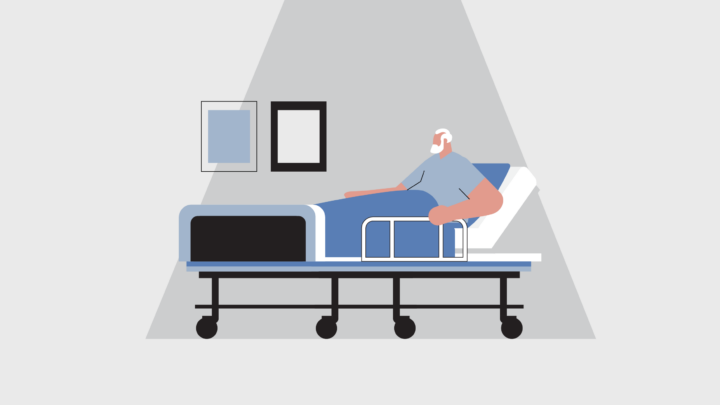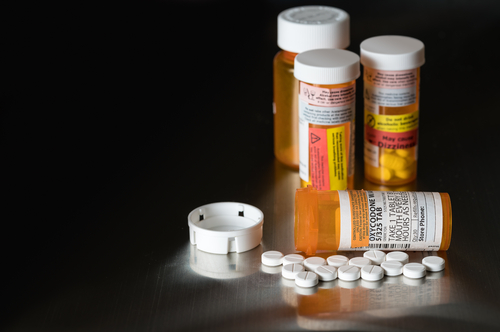
Ozempic has quickly become a cornerstone in healthcare, addressing two critical challenges: type 2 diabetes and obesity.1 As a GLP-1 receptor agonist, its promise of glycemic control and significant weight loss has captured the attention of both physicians and patients.
With 93% of Sermo physicians aware of Ozempic and 74% having prescribed it to their patients, 83% say they’re alarmed by its media portrayal,2 the drug’s rise is as much about clinical success as it’s about public perception.
How are physicians balancing this surge in interest with the realities of its use? From patient demands to ethical dilemmas in prescription prioritization, Ozempic’s popularity raises vital questions about its impact and challenges in practice.
This article gives insights from the Sermo community on the benefits, limitations and broader implications of this medication.
Why physicians are talking about Ozempic

49% of Sermo doctors say they either want to take Ozempic or have done so already.3 Media reports and celebrity endorsements have fueled Ozempic’s meteoric rise.
Stories like Elon Musk’s public admission of using the drug for weight loss4 and viral trends such as “Wegovy Wednesday5” have amplified its appeal beyond its intended purpose.
Patients are increasingly associating Ozempic with dramatic weight-loss results, with some news articles picking up on reductions as significant as 20% of body weight in just 10 weeks.6 One Sermo GP noted, “The type 2 diabetes injectable semaglutide (Ozempic) has gone viral on social media for one of its side effects — weight loss.7.”
While these narratives often highlight success stories, they can overshadow critical considerations, such as its primary use in diabetes management. A Sermo pediatrician voiced frustration: “We have not had this available for months and it is impacting Type 2 diabetes and comorbidities. I blame TikTok and Elon Musk for off-label use.8”
How physicians manage patient expectations for Ozempic
The media frenzy has led to a surge in patients demanding Ozempic for weight loss, even when it’s not medically indicated.
One doctor shared an incident where an obese patient, without diabetes, aggressively sought a prescription. Despite the doctor’s explanation of Ozempic’s intended use and referral to a dietitian, the patient’s reaction turned hostile, culminating in threatening remarks. The physician described the encounter: “The patient yelled and stormed out, leaving me concerned for my safety.9“
Such situations highlight the ethical and legal complexities surrounding Ozempic’s off-label use. Physicians are increasingly forced to navigate not only medical decisions but also trickier doctor-patient relationships with potential threats to their safety.
Global shortages compound the issues
Adding to these challenges, global shortages of Ozempic have exacerbated tensions. Limited availability has prompted difficult conversations about prioritizing diabetic patients over those seeking weight-loss treatments.
One Sermo member, a psychiatrist, remarked, “The deficit of this drug is worrying because it’s not possible to control patients effectively, leading to major complications.10”
Physicians in the Sermo community advised on different ways of addressing these shortages, recommending:
- Educating patients on alternative GLP-1 agonists
- Giving funding to those who need access
- Emphasizing lifestyle changes11
- Collaborating closely with pharmacies for updates
As Ozempic continues to make headlines, it’s clear that balanced, evidence-based patient communication and ethical decision-making are critical to navigating its impact on healthcare.
Physician-reported experiences: managing patient expectations

Managing expectations remains a central challenge for physicians prescribing GLP-1 receptor agonists. Patients influenced by media narratives often anticipate rapid and effortless results.
A Radiologist on Sermo noted, “An awareness campaign by doctors and pharmacy chains is very important12” to make sure patients are aware of the true use of the drug. Agreeing, another GP adds, “With a healthy lifestyle, a balanced diet, exercises to combat stress… the patient diagnosed with diabetes can remain stable.7”
This underscores the critical role of clear communication and education in aligning patient expectations with the clinical realities of treatments like Ozempic.
Ozempic and children: potential applications and concerns
While Ozempic is not approved for children by the FDA, its potential role in addressing childhood obesity has sparked debate. According to a Sermo poll, 26% of physicians believe Ozempic could be effective for patients aged 18 and older, with only 6% considering its use for children under six.13
The lack of robust data on the long-term effects of GLP-1 receptor agonists in children raises significant concerns on the question of can children take Ozempic? A Family Medicine Doctor states, “I think no treatment is necessary under 18 years old because it can cause a lot of adverse reactions.14”
Many physicians advocate for prioritizing non-pharmacological interventions before considering medications. One GP commented, “Families should focus on healthy habits, reducing screen time and encouraging physical activity. Working as a unit can go a long way, eliminating the need for medication.15”
Education for both families and children is essential. A Sermo pediatrician stated, “Before considering medication, families must be educated about diet and lifestyle changes.15” This aligns with the broader consensus that prevention should take precedence over treatment.
Comparing Monjaro vs Ozempic: what physicians need to know
While Ozempic dominates conversations, Mounjaro (tirzepatide) has emerged as a competitor with its broader metabolic benefits. Understanding the difference between ozempic and monjaro is crucial for physicians.
- Ozempic (semaglutide): Primarily targets type 2 diabetes and weight loss. While there are many questions about the side effects of Ozempic, including does Ozempic cause hair loss? And does Ozempic make you tired? Sermo members tend to agree more common side effects include nausea, vomiting, diarrhea and fatigue.16 A GP observed, “The nausea and vomiting have an obvious cause with delayed gastric emptying, but diarrhea remains less understood.6”
- Mounjaro (tirzepatide): Approved for type 2 diabetes, with broader metabolic effects. Side effects are similar but reportedly milder, including nausea (often short-lived) and constipation.17
Sermo physicians also noted regional differences in application. For example, in Peru, Mounjaro is primarily used for metabolic control, with patients reporting reduced anxiety around eating.17
Sermo member for Family Medicine highlighted, “Patients report fewer and less severe side effects with tirzepatide compared to semaglutide, making it a preferred option for some.17” Injection site reactions were also less common with Mounjaro when patients switched from abdominal to arm or leg injections.
The future of Ozempic and similar GLP-1 receptor agonists in healthcare

The rise of Ozempic signals broader trends in diabetes and weight management, with implications for patient care and healthcare systems.
Ozempic and similar drugs show promise beyond diabetes, including potential roles in:
- Metabolic syndrome and prediabetes management.
- Cardiovascular health: Preliminary studies suggest reduced risk of heart-related events.
- Chronic conditions: Research explores benefits for arthritis, Alzheimer’s disease, and cancer.18
Despite its promise, the high cost of GLP-1 receptor agonists and limited insurance coverage remain significant barriers. Furthermore, global supply chain pressures must be addressed to ensure equitable access.
A Sermo pediatrician emphasized, “A strong regulatory role is necessary to curb and contain sharp practices that endanger the health and life of patients.8”
As Ozempic and Mounjaro gain traction, the need for long-term outcomes data becomes increasingly important. Questions about sustainability, weight regain after discontinuation and the impact on overall healthcare costs must be addressed.
Your takeaway
Ozempic’s popularity reflects a paradigm shift in diabetes and weight management. While its benefits are undeniable, physicians must navigate challenges, including ethical considerations, legal consequences, patient expectations and supply chains.
As one Family Medicine doctor on Sermo says, “[It’s a] useful medication but also has its side effects to respect.19” By fostering informed, evidence-based discussions, physicians can ensure that drugs like Ozempic fulfill their potential to improve patient outcomes.
Join the Ozempic conversation on Sermo
Join Sermo to share your experiences with Ozempic and similar GLP-1 receptor agonists.
How are you managing patient expectations, addressing ethical concerns, or navigating supply challenges?
Participate in polls, explore case studies and connect with peers to gain deeper insights into the evolving role of these medications in healthcare.
Footnotes
- Han SH, Safeek R, Ockerman K, Trieu N, Mars P, Klenke A, Furnas H, Sorice-Virk S. Public Interest in the Off-Label Use of Glucagon-like Peptide 1 Agonists (Ozempic) for Cosmetic Weight Loss: A Google Trends Analysis. Aesthet Surg J. 2023 Dec 14
- Sermo 2024. Poll of the week: Ozempic
- Sermo 2024. Any doctors out there taking Ozempic / Wegovy / Rybelsus etc themselves?
- The Independent: Elon Musk credits weight loss to Mounjaro and Ozempic
- The Independent: Ozempic weight loss: What is Wegovy Wednesday?
- Sermo member (GP), 2024. Comment on Real world side effect experience from Mounjaro?
- Sermo member (GP), 2024. Comment on Poll of the Week: Ozempic and weight loss.
- Sermo member (Pediatrics), 2024. Comment on Poll of the Week: Ozempic and weight loss.
- Sermo, 2024. Medicolegal: A question about a patient threat.
- Sermo member (Psychiatry), 2024. Comment on Poll of the Week: Ozempic and weight loss.
- Sermo members, 2024. Comments on Poll of the Week: Ozempic and weight loss.
- Sermo member (Radiologist), 2024. Comment on Poll of the Week: Ozempic and weight loss.
- Sermo, 2024. Day 2—Childhood Obesity Awareness Month Promo
- Sermo member (GP), 2024. Comment on Sermo Poll: Day 2—Childhood Obesity Awareness Month Promo.
- Sermo member (Pediatrics), 2024. Comment on Sermo Poll: Day 2—Childhood Obesity Awareness Month Promo.
- Sermo members, 2024. Comments on Real world side effect experience from Mounjaro?
- Sermo member (Family Medicine), 2024. Comment on Real world side effect experience from Mounjaro?
- Sermo member (Family Medicine), 2024. Comment on Poll of the Week: Ozempic and weight loss.














